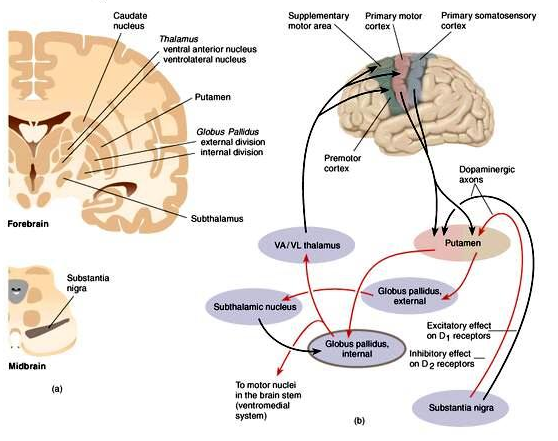Basal ganglia function
The basal ganglia (also known as basal nuclei) are a group of nuclei of diverse origin in the brains of vertebrates which act as a cohesive functional unit. They are positioned at the base of the forebrain and are strongly linked with the cerebral cortex, thalamus and the other brain regions. The basal ganglia are related with a diversity of functions, involving voluntary motor control, procedural learning linking to routine behaviors or "habits" like bruxism, eye movements, emotional functions and cognitive.
One of the most severely studied functions of the basal ganglia (BG) is their role in controlling the eye movements. Eye movement is inclined by an extensive system of brain areas which converge on a midbrain region known as the superior colliculus (SC). The SC is a layered formation whose layers form 2-dimensional retinotopic maps of visual space. A "bump" of neural action in the deep layers of the SC drives an eye movement directed toward the equivalent point in space.

The SC obtains a strong inhibitory projection from the BG, beginning in the substantia nigra pars reticulata (SNr). Neurons in the SNr generally fire constantly at high rates, although at the onset of an eye movement they "pause", therefore discharging the SC from inhibition. Eye movements of all kinds are related with "pausing" in the SNr; though, individual SNr neurons might be more powerfully related with few types of movements than others. Neurons in few parts of the caudate nucleus also show activity associated to eye movements. As the huge majority of caudate cells fire at very low rates, this activity about always shows up as an increase in firing rate. Therefore, eye movements start with activation in the caudate nucleus that inhibits the SNr via the direct GABAergic projections, which in return dis-inhibits the SC.